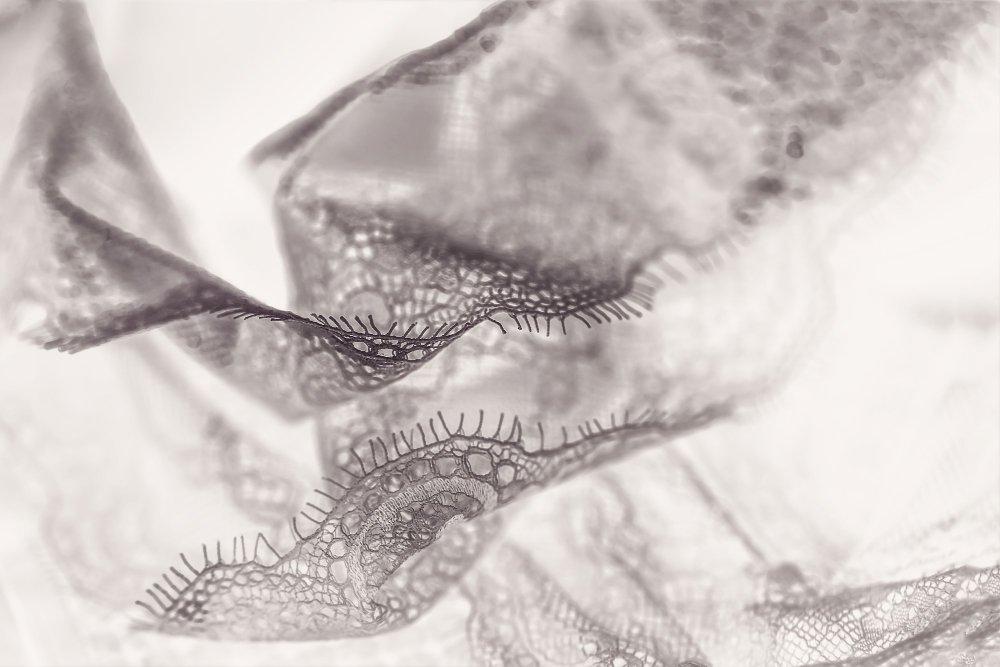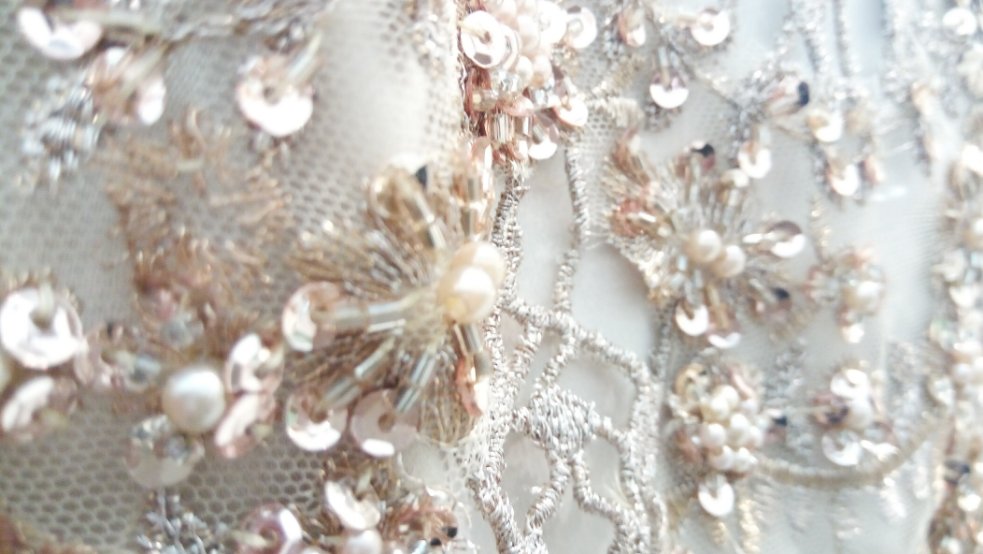Discover everything about the world’s most elegant lace fabric, from its French origins to modern styling tips and care instructions.
Few materials capture the essence of timeless elegance like Chantilly lace fabric. This delicate textile has graced royal courts, modern red carpets, and countless wedding ceremonies for over three centuries. Whether you’re a fashion designer, bride-to-be, or textile enthusiast, understanding this remarkable fabric opens doors to endless creative possibilities.
Table of Contents
What is Chantilly Lace?
Chantilly lace is a delicate bobbin lace traditionally made from black silk threads, featuring intricate floral or botanical patterns on a fine mesh background. Named after the French town of Chantilly where it originated, this lace fabric represents the pinnacle of French textile artistry. The lace is characterized by its lightweight feel, scalloped edges, and detailed floral motifs outlined with corded threads.
What Makes Chantilly Lace Special?
Several unique features set Chantilly lace apart from other types of fabrics:
- Intricate Construction: Artisans create each piece using traditional bobbin lace techniques, weaving threads on a hexagonal mesh ground. The detailed floral patterns often feature roses, vines, and scrollwork that appear almost three-dimensional.
- Signature Scalloped Edges: Authentic Chantilly lace always features meticulously crafted scalloped borders, adding to its refined appearance.
- Corded Outlines: The floral motifs are outlined with slightly thicker threads called “cordonnet,” giving the patterns definition and depth.
- Historical Significance: This lace carries centuries of tradition, having adorned everyone from Marie Antoinette to Kate Middleton.
Historical Origins and Cultural Impact

French Royal Beginnings
The story of Chantilly lace begins in 17th-century France, where skilled artisans in the town of Chantilly perfected techniques that would define luxury textiles for generations. The craft gained royal patronage during the reign of Louis XIV, quickly becoming a symbol of aristocratic status.
During the 18th century, the lace reached its golden age. French nobility, including Madame du Barry and Marie Antoinette, favored its ethereal quality for court gowns and accessories. The intricate botanical patterns mirrored the era’s fascination with nature and organic beauty.
Evolution Through Time
The French Revolution temporarily disrupted lace production, but the craft survived and adapted. The Industrial Revolution brought mechanical looms, allowing for wider production while maintaining the traditional aesthetic. By the 19th century, Chantilly lace had spread beyond French borders, influencing textile traditions across Europe.
Who Made Chantilly Lace Famous?
While French artisans created the technique, several figures popularized Chantilly lace globally:
- Marie Antoinette: Her extensive use of the lace in court dress elevated its status
- Victorian brides: The era’s wedding fashion made white and ivory Chantilly lace synonymous with bridal elegance
- Kate Middleton: Her 2011 royal wedding dress featured Chantilly lace details, sparking renewed global interest
- Fashion houses: Designers like Valentino, Oscar de la Renta, and Vera Wang regularly showcase the fabric in haute couture collections
Technical Specifications and Quality Identification
Authentic Chantilly Lace Characteristics
Understanding how to identify genuine Chantilly lace helps ensure you’re getting quality material:
| Feature | Authentic Chantilly | Imitation |
|---|---|---|
| Texture | Soft, lightweight, airy | Stiff, rough, or heavy |
| Patterns | Large, intricate florals with fine detail | Simple or poorly defined designs |
| Edges | Perfectly scalloped borders | Straight or irregular edges |
| Material | Silk or fine cotton threads | Synthetic with visible shine |
| Price | Higher due to craftsmanship | Suspiciously low cost |
Construction Details
- Thread Density: Genuine Chantilly lace uses varying thread densities to create depth and dimension in patterns. Denser areas form the floral motifs, while lighter sections create the delicate background mesh.
- Weight Specifications: Quality Chantilly lace typically weighs between 80-120 grams per square meter, making it lighter than most cotton fabrics but substantial enough for garment construction.
- Standard Widths: Most Chantilly lace comes in 90cm (approximately 35.4 inches) width, though premium versions can reach 130cm for larger projects.
Material Variations and Modern Adaptations
Fiber Options Comparison
| Material | Characteristics | Best Uses | Price Range |
|---|---|---|---|
| Silk Blend | Natural drape, luxurious feel, excellent longevity | Bridal wear, formal evening gowns | $49-$149/yard |
| Cotton | Breathable, easy care, vintage appearance | Summer dresses, casual wear | $22-$68/yard |
| Polyester | Wrinkle-resistant, colorfast, affordable | Home décor, daily wear | $15-$45/yard |
| Dead Stock | Limited edition, eco-friendly, unique patterns | Sustainable fashion projects | $30-$90/yard |
Choosing the right type of Chantilly lace depends on your specific project needs, budget, and style preferences. Take our Chantilly Lace Style Quiz to receive personalized recommendations for fabric grade, color palette, and design patterns that match your vision perfectly.
For those interested in natural vs synthetic fabrics, silk Chantilly lace offers the most authentic experience, while polyester versions provide practical benefits for frequent use items.
Color Variations and Modern Interpretations
While traditional Chantilly lace was exclusively black, modern production offers endless color possibilities:
- Classic Colors: Black, ivory, white, champagne
- Contemporary Options: Blush pink, dusty blue, sage green, burgundy
- Metallic Accents: Gold threads, silver highlights, copper details
- Bold Choices: Deep jewel tones, vibrant reds, navy blues
Versatile Applications Across Fashion and Décor
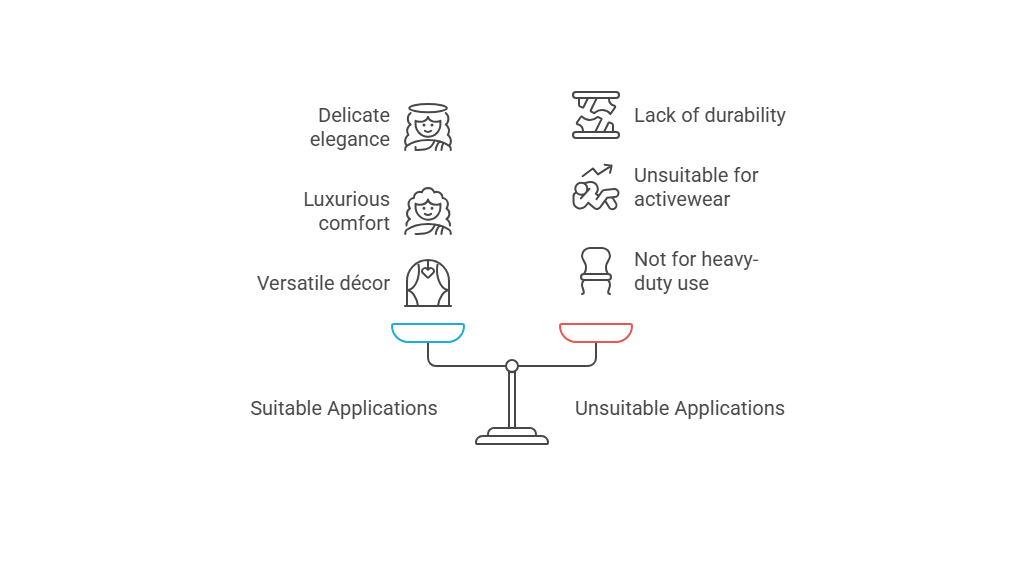
Bridal and Special Occasion Wear
Chantilly lace remains the gold standard for bridal fashion. Its delicate appearance photographs beautifully and creates stunning silhouettes:
- Wedding Veils: The lightweight nature makes it perfect for cathedral-length veils that won’t weigh down the bride
- Gown Overlays: Creates depth and texture over satin or silk bases
- Sleeve Details: Adds romantic touches to sleeves and necklines
- Reception Dresses: Offers comfort for dancing while maintaining elegance
Fashion Design Applications
Modern designers appreciate Chantilly lace’s versatility across different garment types:
- Evening Wear: Creates show-stopping red carpet looks
- Cocktail Dresses: Adds sophistication to semi-formal occasions
- Lingerie: The soft texture feels luxurious against skin
- Accessories: Scarves, gloves, and wraps gain instant elegance
Home Décor and Interior Design
Beyond fashion, Chantilly lace enhances interior spaces:
- Window Treatments: Curtain panels filter light beautifully while maintaining privacy
- Table Linens: Runners and overlays create romantic dining settings
- Throw Pillows: Adds texture contrast to modern furniture
- Wall Art: Framed vintage pieces become conversation starters
When Not to Use Chantilly Lace
While versatile, Chantilly lace isn’t suitable for every application:
- Heavy-duty items: The delicate nature makes it inappropriate for upholstery or high-wear garments
- Children’s everyday clothes: Too delicate for active play
- Outdoor gear: Not suitable for water-resistant fabric applications
- Athletic wear: Lacks the stretch and moisture-wicking properties needed for activewear
Comprehensive Care and Maintenance Guide
Professional vs Home Care Decision Matrix
| Garment Type | Care Method | Frequency | Special Considerations |
|---|---|---|---|
| Wedding dress | Professional dry cleaning | Once or as needed | Specify delicate lace handling |
| Everyday blouse | Hand wash at home | After 2-3 wears | Use mesh laundry bag |
| Vintage pieces | Museum-quality cleaning | Rarely | Requires textile conservator |
| Home décor items | Gentle machine wash | Monthly or seasonally | Remove from direct sunlight |
Step-by-Step Home Care Instructions
Hand Washing Process:
- Preparation: Fill a clean basin with lukewarm water (never hot)
- Soap Selection: Use gentle detergent specifically designed for delicate fabrics
- Washing: Gently swish the lace for 2-3 minutes, avoiding rubbing or wringing
- Rinsing: Rinse thoroughly with cool water until soap residue disappears
- Drying: Lay flat on clean towels, reshaping gently while damp
Machine Washing Guidelines:
- Use delicate cycle with cold water only
- Place items in mesh laundry bags for protection
- Select shortest wash time available
- Never use fabric softener or bleach
Stain Removal Techniques
| Stain Type | Treatment Method | Time Limit |
|---|---|---|
| Food/Oil | Cornstarch absorption, then gentle dish soap | Treat immediately |
| Makeup | Makeup remover on cotton swab, dab gently | Within 30 minutes |
| Wine/Juice | White wine or club soda, blot don’t rub | Act within 15 minutes |
| Perspiration | White vinegar solution (1:4 ratio with water) | Before washing |
Maintaining a proper care schedule is crucial for preserving your Chantilly lace investments. Use our Care Timeline Tracker to monitor cleaning schedules, track maintenance activities, and receive timely reminders for professional cleaning or condition checks.
Long-term Storage Solutions
- Climate Control: Store in cool, dry environments with stable temperature and humidity
- Container Selection: Use acid-free boxes with tissue paper dividers
- Positioning: Lay flat rather than hanging to prevent stretching
- Protection: Include lavender sachets to deter insects naturally
- Inspection: Check annually for signs of yellowing or pest damage
Styling and Design Applications
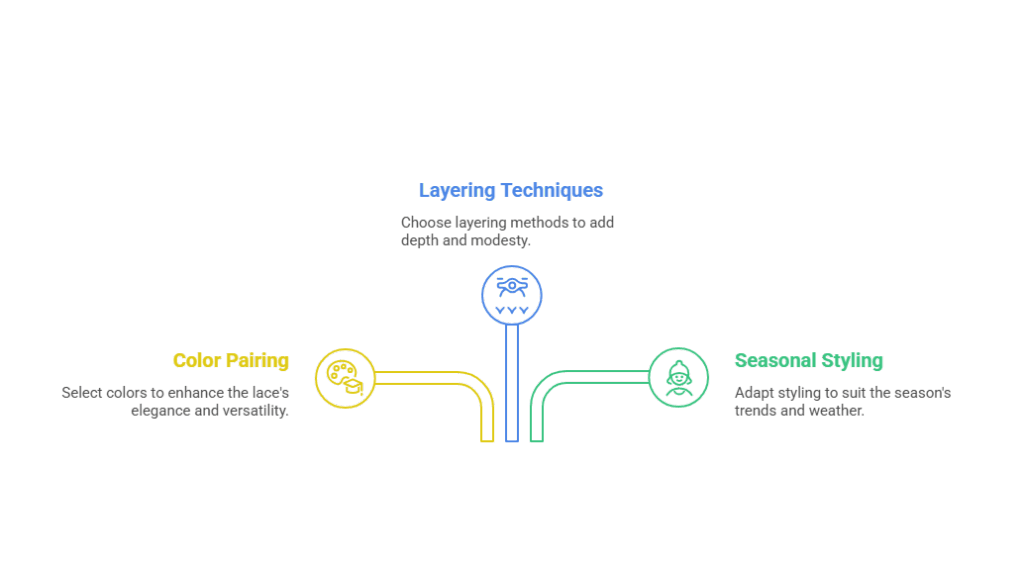
Color Pairing Guide
What Pairs Well with Chantilly Lace:
- Neutral Foundations: Cream, beige, taupe create sophisticated combinations
- Metallic Accents: Gold jewelry and accessories enhance the luxury feel
- Jewel Tones: Deep emerald, sapphire, or ruby create striking contrast
- Soft Pastels: Blush pink, powder blue, sage green maintain romantic appeal
Layering Techniques
- Over Solid Fabrics: Creates depth while maintaining the lace pattern visibility
- Under Sheer Materials: Adds modesty while preserving delicate appearance
- Mixed Textures: Combine with satin, silk, or velvet for rich contrast
Seasonal Styling Considerations
- Spring/Summer: Light colors, minimal layering, focus on breathability
- Fall/Winter: Darker tones, creative layering, pair with winter fabrics like wool or cashmere
Market Analysis and Sourcing Guide
Quality Suppliers and Pricing
Premium French Mills:
- Sophie Hallette: Industry leader with 160+ years of experience
- Solstiss: Specializes in high-end fashion house collaborations
- Riechers Marescot: Known for innovation while maintaining tradition
International Alternatives:
- Italian producers offer bolder geometric patterns
- English mills focus on wedding and bridal applications
- Asian manufacturers provide budget-friendly options
How Much Does Chantilly Lace Cost?
Pricing varies significantly based on origin, material, and complexity:
- Budget Range ($15-30/yard): Synthetic versions suitable for home projects
- Mid-Range ($30-80/yard): Cotton or cotton-blend options for everyday wear
- Premium ($80-150/yard): Silk versions from established European mills
- Luxury ($150+/yard): Hand-finished pieces or designer collaborations
Before making any purchase, use our suite of Chantilly lace planning tools to calculate exact yardage requirements, estimate project costs, and determine the best fabric specifications for your needs.
Ethical Sourcing Considerations
When purchasing Chantilly lace, consider:
- Fair Trade Certification: Ensures artisan wages and working conditions
- Environmental Impact: Choose suppliers with sustainable practices
- Cultural Authenticity: Support traditional French producers when possible
Frequently Asked Questions
What is the meaning of Chantilly lace?
The name comes from the French town of Chantilly, where this style of bobbin lace was perfected in the 17th century. The term has become synonymous with high-quality, delicate lace featuring floral patterns on mesh backgrounds.
Is Chantilly lace timeless?
Absolutely. Its three-century history and continued presence in haute couture demonstrate its enduring appeal. The combination of classic craftsmanship and adaptable styling ensures its relevance across generations.
What is the most expensive lace in the world?
While Chantilly lace ranks among the most expensive, handmade Burano lace from Venice and Belgian Duchesse lace can command even higher prices, sometimes reaching $500+ per yard for museum-quality pieces.
Is Chantilly lace the same as French lace?
Chantilly lace is a specific type of French lace, but not all French lace is Chantilly. Other French lace types include Alençon, Valenciennes, and Cluny, each with distinct characteristics.
Does Chantilly lace look pink?
Traditional Chantilly lace doesn’t naturally appear pink. However, modern variations come in pink shades, and lighting conditions can sometimes give ivory or champagne lace a subtle pink cast.
Who invented Chantilly lace?
No single person invented Chantilly lace. It evolved through the collective efforts of French artisans in the Chantilly region during the 17th century, building on earlier bobbin lace techniques.
Can you wash Chantilly lace?
Yes, but with extreme care. Hand washing with gentle detergent is safest for valuable pieces. Machine washing is possible for newer, less delicate items using protective mesh bags and delicate cycles.
Is Chantilly lace a good trim color?
When referring to Benjamin Moore’s “Chantilly Lace” paint color (OC-65), it’s an excellent choice for trim due to its crisp, clean white appearance that complements various wall colors without appearing stark.
How do I calculate exactly how much Chantilly lace I need for my project?
The amount of Chantilly lace required varies significantly based on garment type, size, complexity, and fabric width. Our Yardage Estimator tool provides precise calculations by considering all these factors, including pattern matching requirements and recommended extra allowances for adjustments.
Understanding Quality Grades
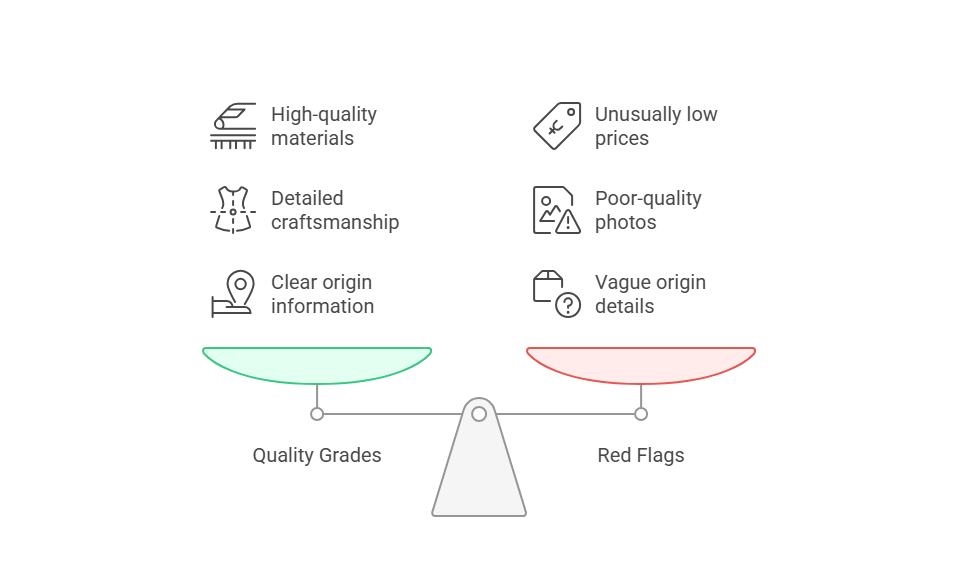
Professional Quality Assessment
- Museum Grade: Antique pieces requiring specialized conservation
- Couture Grade: Hand-finished details suitable for high-end fashion
- Commercial Grade: Machine-made but well-constructed for ready-to-wear
- Craft Grade: Budget-friendly options for home sewing projects
Red Flags to Avoid
- Prices significantly below market rates
- Poor-quality photographs hiding detail issues
- Sellers unable to specify origin or material content
- Lace with visible glue lines or heat-sealed edges
Unsure which grade suits your project? Our style quiz matches your preferences with appropriate quality levels and care requirements.
Project Planning and Yardage Calculations
Common Garment Requirements
| Project Type | Yardage Needed | Width Required | Skill Level |
|---|---|---|---|
| Bridal veil | 2-4 yards | 90cm minimum | Intermediate |
| Cocktail dress overlay | 3-5 yards | 90-130cm preferred | Advanced |
| Blouse sleeves | 1-2 yards | 90cm adequate | Beginner |
| Curtain panels | Varies by window | Any width works | Beginner |
Planning your Chantilly lace project requires precise calculations to avoid costly mistakes. Our Chantilly Lace Yardage Estimator helps you determine exact fabric requirements for any garment, while the Fabric Weight Calculator ensures you understand the total weight and cost implications of your project before purchasing.
Construction Tips for Sewers
- Cutting: Use sharp fabric scissors and cut on a flat surface
- Handling: Support the weight while sewing to prevent stretching
- Seaming: Use French seams or bound edges to prevent fraying
- Pressing: Use pressing cloth and low heat to avoid melting synthetic fibers
Before beginning any project, calculate your exact requirements using our planning tools to avoid running short of fabric from the same dye lot.
For those new to working with delicate materials, our guide to fabric cutting for sewing projects provides additional techniques.
Cultural Impact and Modern Relevance
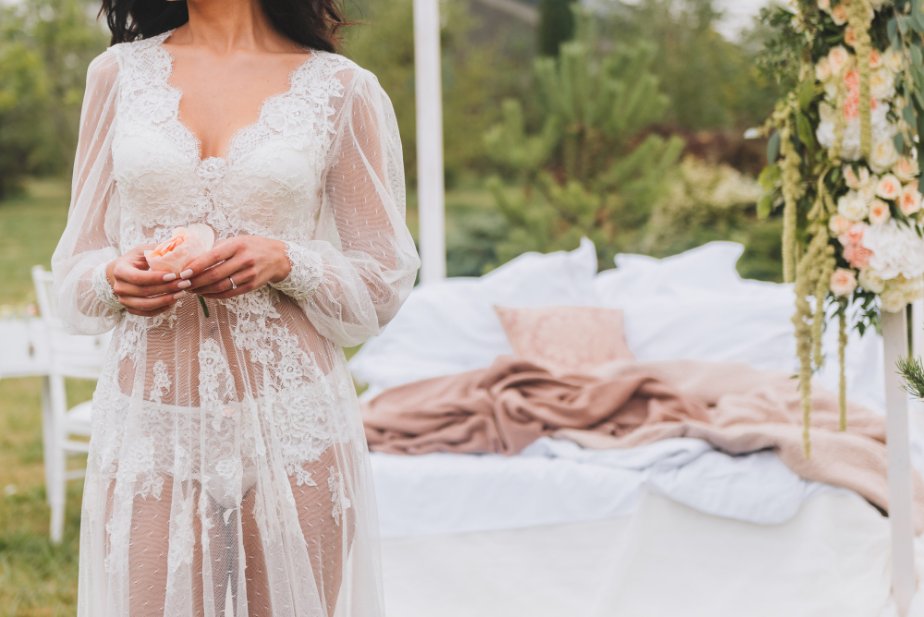
Celebrity Influence
Recent years have seen renewed interest in Chantilly lace through celebrity fashion choices:
- Red carpet appearances featuring contemporary interpretations
- Royal wedding influence continuing the bridal tradition
- Fashion week presentations showcasing innovative applications
- Social media driving appreciation for artisanal craftsmanship
Sustainability and Traditional Crafts
The slow fashion movement has highlighted Chantilly lace’s value:
- Longevity: Quality pieces last generations with proper care
- Artisan Support: Purchasing authentic lace supports traditional craftspeople
- Versatility: Can be repurposed and restyled multiple times
- Heritage Preservation: Maintains cultural textile traditions
Troubleshooting Common Issues
Yellowing Prevention and Treatment
- Prevention: Store away from direct sunlight and in acid-free containers
- Early Treatment: Gentle oxygen bleach specifically designed for delicate fabrics
- Professional Help: Severe yellowing requires textile conservation expertise
Snag and Tear Repair
- Minor Snags: Gently work loose threads back into place with a blunt needle
- Small Tears: Invisible mending techniques using matching thread
- Major Damage: Professional restoration may be necessary for valuable pieces
Sizing and Fit Adjustments
Since Chantilly lace doesn’t stretch significantly, proper sizing is crucial:
- Always check measurements against finished garment requirements
- Consider ease requirements for comfortable wearing
- Plan alterations before cutting to avoid waste
Future Trends and Innovations
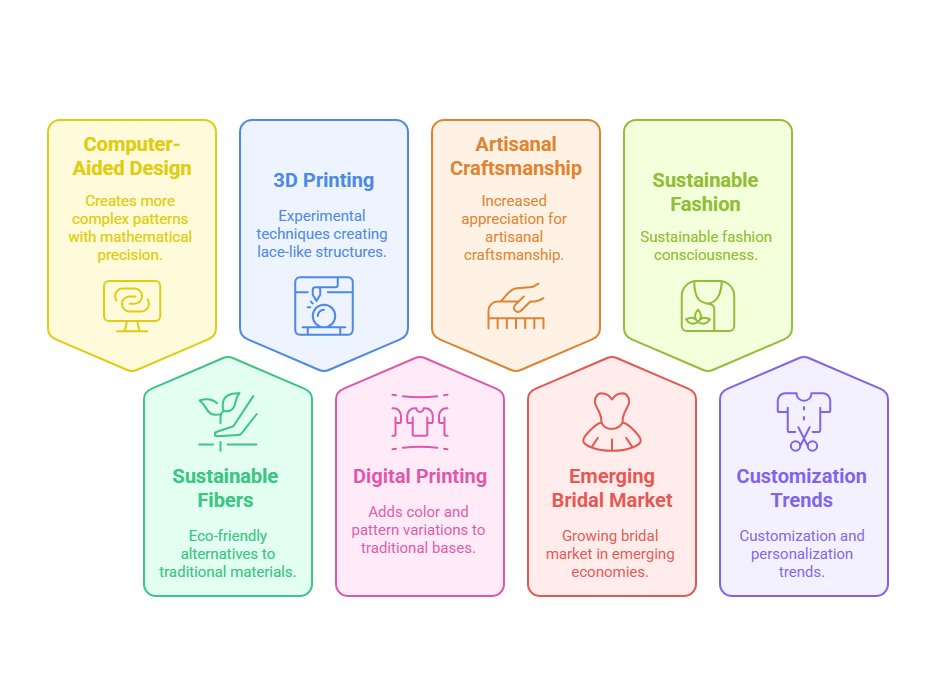
Technology Integration
Modern lace production incorporates new technologies while preserving traditional aesthetics:
- Computer-Aided Design: Creates more complex patterns with mathematical precision
- Sustainable Fibers: Eco-friendly alternatives to traditional materials
- 3D Printing: Experimental techniques creating lace-like structures
- Digital Printing: Adds color and pattern variations to traditional bases
Market Predictions
Industry experts predict continued growth in luxury textile markets, driven by:
- Increased appreciation for artisanal craftsmanship
- Growing bridal market in emerging economies
- Sustainable fashion consciousness
- Customization and personalization trends
Conclusion
Chantilly lace fabric represents the perfect marriage of historical craftsmanship and contemporary versatility. Its three-century journey from French aristocratic courts to modern fashion runways demonstrates remarkable adaptability while maintaining core aesthetic principles.
Key Takeaways
For Fashion Designers: Chantilly lace offers unmatched elegance and versatility. Consider it for special occasion wear, bridal collections, and statement pieces. The investment in quality materials pays dividends in finished garment appeal and client satisfaction.
For Home Sewers: Start with smaller projects to understand the fabric’s behavior before attempting complex garments. Quality tools and proper techniques make the difference between professional and amateur results.
For Brides: Chantilly lace provides timeless appeal that photographs beautifully and feels luxurious. Consider your venue and season when choosing colors and weights.
For Interior Designers: Use Chantilly lace sparingly for maximum impact. It works best as accent pieces rather than primary materials in home décor applications.
Investment Recommendations
Professional Planning: Use our comprehensive Chantilly lace toolkit to make informed decisions about fabric selection, yardage requirements, and maintenance schedules. These free tools help prevent costly mistakes and ensure project success.
Care Essentials
Remember that proper care extends far beyond washing. Climate control, proper storage, and gentle handling throughout the garment’s life are equally important. When in doubt, consult professionals rather than risk damage to irreplaceable pieces.
Final Thoughts
Chantilly lace fabric continues to evolve while honoring its rich heritage. Whether you’re creating a once-in-a-lifetime wedding dress or adding elegant touches to home décor, understanding this remarkable textile opens doors to timeless beauty and sophisticated style. The combination of traditional craftsmanship and modern adaptability ensures that Chantilly lace will remain relevant for generations to come.
For those inspired to explore more textile options, our comprehensive guide to common fabric types and their uses provides valuable context for understanding how Chantilly lace fits within the broader textile landscape.

